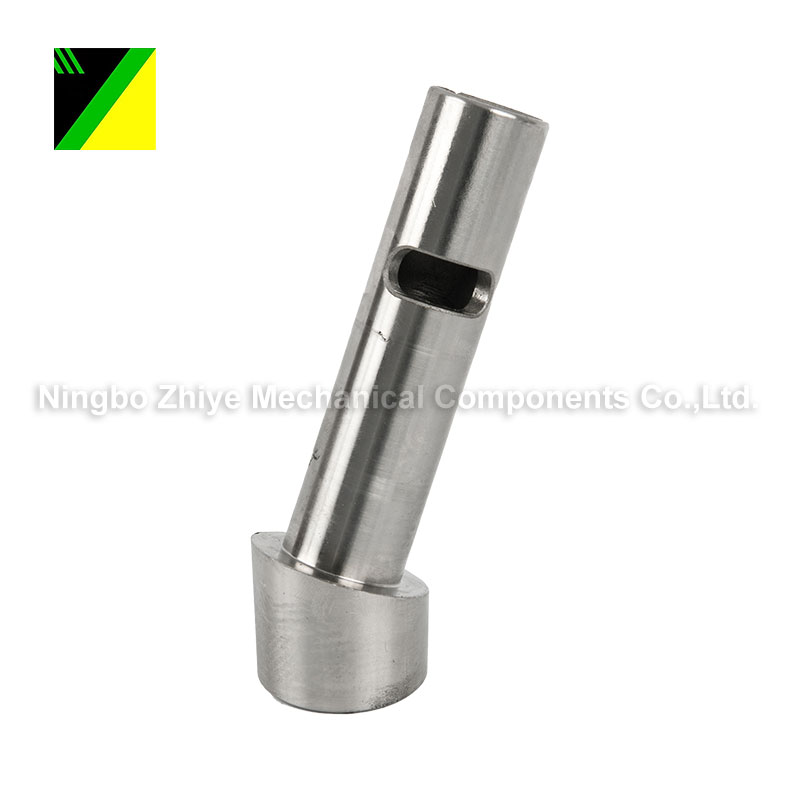
- English
- Español
- Português
- русский
- Français
- 日本語
- Deutsch
- tiếng Việt
- Italiano
- Nederlands
- ภาษาไทย
- Polski
- 한국어
- Svenska
- magyar
- Malay
- বাংলা ভাষার
- Dansk
- Suomi
- हिन्दी
- Pilipino
- Türkçe
- Gaeilge
- العربية
- Indonesia
- Norsk
- تمل
- český
- ελληνικά
- український
- Javanese
- فارسی
- தமிழ்
- తెలుగు
- नेपाली
- Burmese
- български
- ລາວ
- Latine
- Қазақша
- Euskal
- Azərbaycan
- Slovenský jazyk
- Македонски
- Lietuvos
- Eesti Keel
- Română
- Slovenski
- मराठी
- Srpski језик
How to solve the cold barrier defect of stainless steel precision casting?
2023-06-25
In the casting process, there are a large number of casting defects in the stainless steel precision casting process, and the most common ones are casting defects in casting. Underpour is an incomplete casting due to the inability of the liquid metal to fill the mold cavity, characterized by a smooth rounded edge on the inside of the cast, or one or more ends of the cast that are not filled with liquid metal; cold gaps are caused by A discontinuity that results from incomplete welding of the bond between two strands of metal, usually appearing as a crack or wrinkle with smooth rounded edges.
The characteristics of these two types: one is that it is easy to be found in the inspection of castings; the other is that except for the cleaning process, the causes of it almost exist in the process of every stainless steel precision casting forged. This paper discusses the causes of casting defects and condensation, and puts forward corresponding preventive measures.
Causes:
1. The molten metal pouring temperature is low or the mold temperature is low;
2. The composition of the alloy does not meet the requirements, and the circulation is poor;
3. The metal liquid is divided into stocks and filled, and the welding is poor;
4. The gate is unscientific and the steps are too long;
5. Low filling rate or poor exhaust;
6. The injection pressure is slightly lower.
Countermeasures:
1. Stainless steel precision casting products turn black with flow marks. Moderately increase the pouring temperature and mold temperature; observe the mold temperature and reduce the paint spraying
2. Change the composition of the alloy to improve the liquidity;
3. Look at the molten aluminum flowing into the ironing mold, and the impact of the molten metal produces a cold barrier, which is generally in the form of a vortex, accompanied by flow marks. Improve the gating system and improve the filling direction of the ingate. In addition, a slag collection bag can be set up on the edge of the casting to improve the filling standard;
4. Accompanied by false distal pressure. Change the gate position and cross-sectional area, improve the overflow standard, and increase the overflow volume;
5. Change the flow rate of molten metal to increase the injection rate;
The characteristics of these two types: one is that it is easy to be found in the inspection of castings; the other is that except for the cleaning process, the causes of it almost exist in the process of every stainless steel precision casting forged. This paper discusses the causes of casting defects and condensation, and puts forward corresponding preventive measures.
Causes:
1. The molten metal pouring temperature is low or the mold temperature is low;
2. The composition of the alloy does not meet the requirements, and the circulation is poor;
3. The metal liquid is divided into stocks and filled, and the welding is poor;
4. The gate is unscientific and the steps are too long;
5. Low filling rate or poor exhaust;
6. The injection pressure is slightly lower.
Countermeasures:
1. Stainless steel precision casting products turn black with flow marks. Moderately increase the pouring temperature and mold temperature; observe the mold temperature and reduce the paint spraying
2. Change the composition of the alloy to improve the liquidity;
3. Look at the molten aluminum flowing into the ironing mold, and the impact of the molten metal produces a cold barrier, which is generally in the form of a vortex, accompanied by flow marks. Improve the gating system and improve the filling direction of the ingate. In addition, a slag collection bag can be set up on the edge of the casting to improve the filling standard;
4. Accompanied by false distal pressure. Change the gate position and cross-sectional area, improve the overflow standard, and increase the overflow volume;
5. Change the flow rate of molten metal to increase the injection rate;
6. The overall pressure of the casting is false. Increase the specific pressure (try not to use it), and transfer to a large-tonnage machine if possible.




